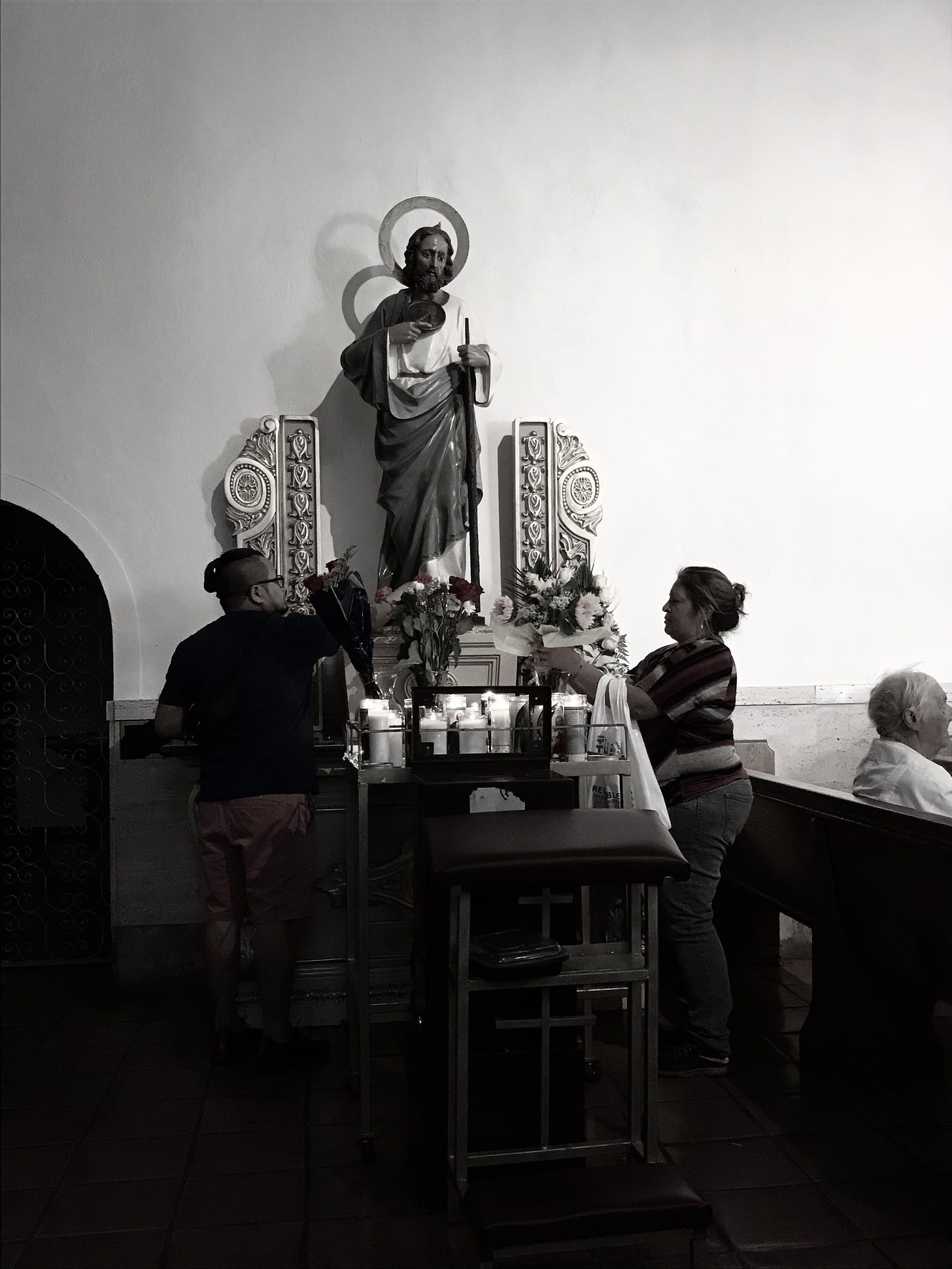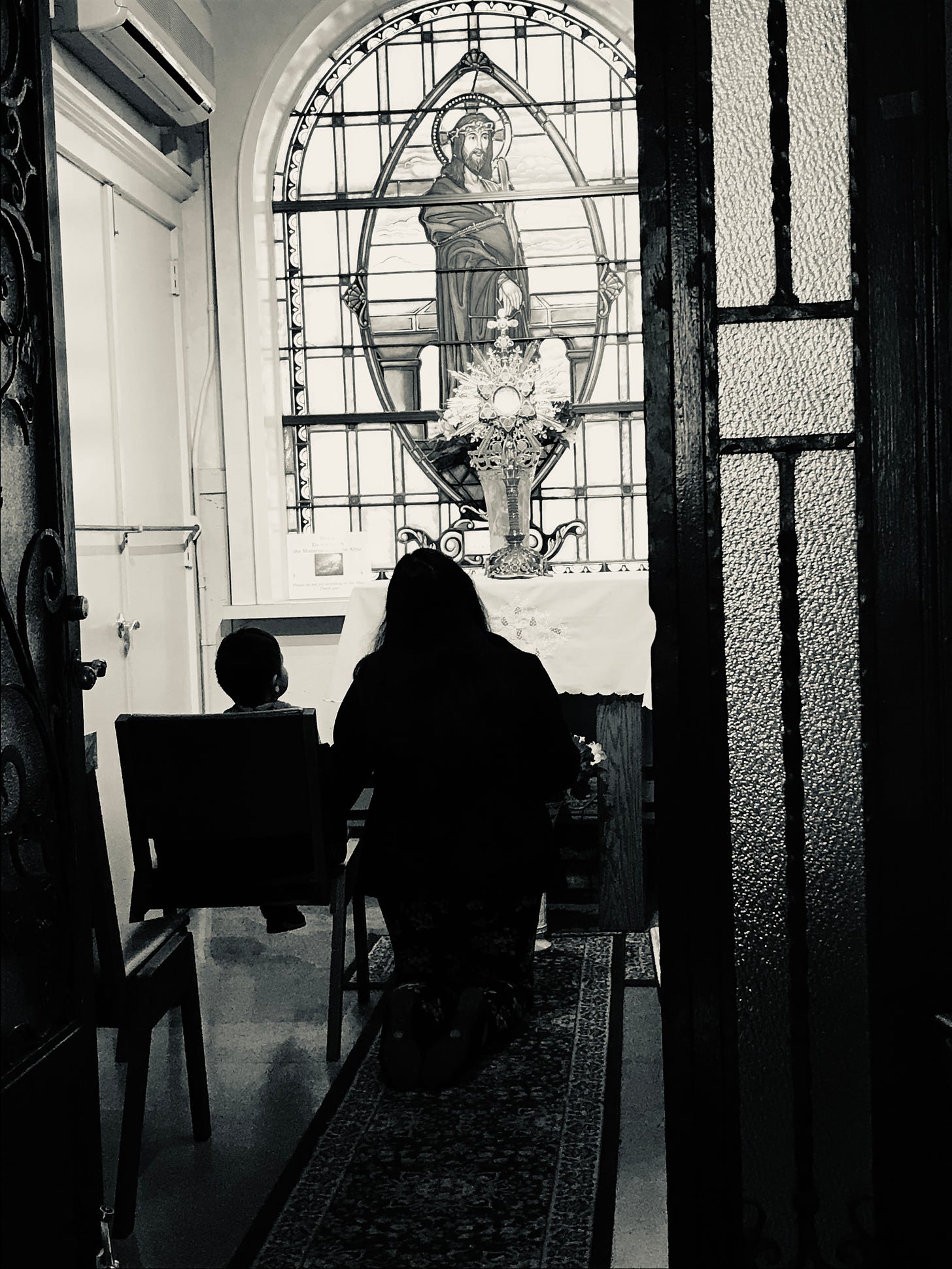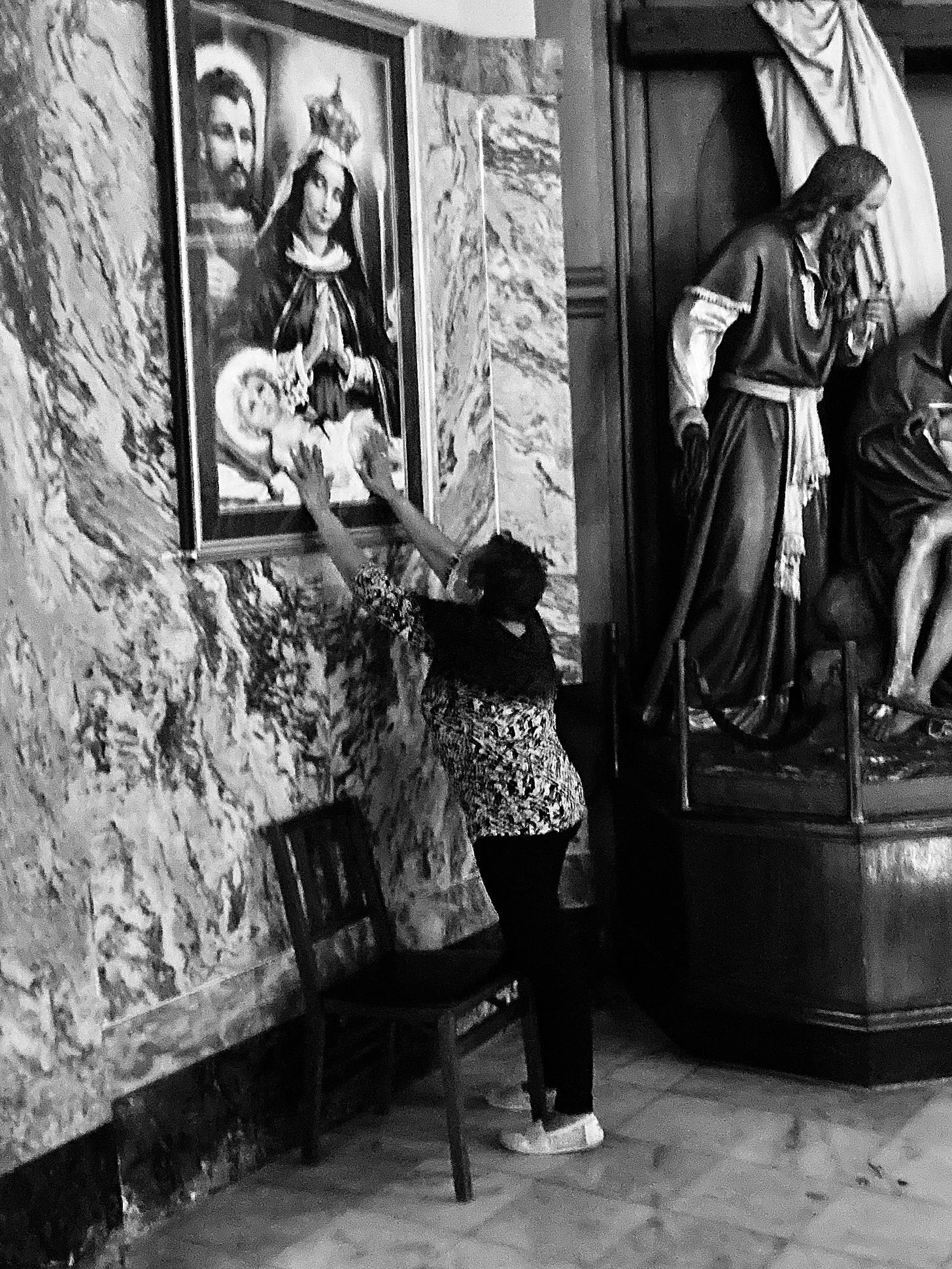Originally published in Ethika Politika
Last month, I was staying at my family’s summer house and decided to attend Sunday Mass at the nearest parish. I found myself surrounded by middle to upper-middle class Irish-Americans and Italian-Americans. The majority were in their 50s or older, with a smattering of middle aged parents with their children.
The homily was lackluster, and the music relied too heavily on the post-conciliar 1970s repertoire...David Haas and the like. The worship space was large and blank, except for some tasteful stained glass saint windows and a handful of contemporary saint statues. The lighting was blinding, making it close to impossible to have an intimate, contemplative worship experience with our Lord.
Having grown up in the Orthodox Church, in addition to having a strong appreciation for aesthetics, I have high standards for liturgy. I sense a deep need for the Incarnation. When I pray, when I go to Mass, I want to feel the infinite Mystery present in my midst. So yes, I want Mass to be said reverently, I want the music to be beautiful, and I want the worship space to be lit properly, chock full of statues, and heavily incensed. But above all, I feed off of the piety—rather, the neediness, the spiritual hunger—of the celebrant and worshippers.
A Meek Piety of Lived Need
Working in an urban area, I usually attend Mass with working class immigrants. The majority are from Latin America, West Africa, or the Afro-Caribbean isles. There’s always a handful of the city’s remaining Southern and Eastern Europeans (Italians, Portuguese, Polish)--the majority of whom have assimilated for the most part, and a couple of freshly immigrated southeast Asians. The devotion of these populations is markedly distinct from that of the totally assimilated, nearly Waspish, upper-middle class suburban crowd.
I’m captivated by their pietistic practices. Both before and after Masses, parishioners can be seen obsessively rubbing the feet of saint statues, or writing intentions on little slips of paper, and cleverly inserting them into any space they can find: in the loop in Saint Michael’s sandal or the space between the lily stems held in Saint Joseph’s hand. Some will offer a donation to light a candle, while others might pin a dollar directly onto the robes of St. Gerard, perhaps asking him for a healthy pregnancy or giving thanks for prayers answered. Beside the newly installed statues of Our Lady of Guadalupe and Saint Juan Diego (in honor of the influx of Mexican immigrants) are an abundance of rose bouquets. In the side chapel, where the Blessed Sacrament is exposed, I’ll often find people praying on their knees, hands in the air holding a rosary, swaying back and forth while muttering prayers under their breath, or others who simply lay face down in front of the monstrance.
While many will dismiss this ostentatious style of devotion as overtly—in the words of Charles Taylor— “enthusiastic,” that is, bordering on the superstitious, archaic, or downright pagan, I see something more in it. More accurately put, I see something more in the faces of these people. There is a profound sense of humility, or rather, meekness. I can’t help but think that these are the poor in spirit that Jesus spoke of in the Sermon on the Mount. At the root of these devotional practices is the devotees’ deep awareness of their need for the Mystery of God’s infinite love. There is no illusion of autonomy, of self-sufficiency or naive complacency in their hearts, but a very real affirmation of their utter dependence on Him for hope and meaning in their daily affairs.
I feel this most intensely at the 7 am daily Mass. For those who wake up at the crack of dawn so that they can manage to receive God’s body in the Eucharist before running off to an 8 hour (or more) work day, attending the liturgy is hardly a means of maintaining a cultural practice or checking off an obligatory box. It is a cry from the heart, is it the expression of a hunger that goes beyond the stomach, for a bread that will sustain them in their day at work, in their coming home to feed the kids, to a pile of bills that they are struggling to pay, or to yet another visit to an immigration lawyer. Free from all pretense and superficiality, they live their hearts to the fullest
Praying with the Longing in our Brothers and Sisters
Perhaps I am more assimilated into American culture, and am more well-off financially. But my heart is just as dependent as theirs. I am just as incapable in making my daily grind beautiful, meaningful, and satisfying. Not only is my heart at home in this context, but it feeds off of the people surrounding me. I don’t have to feel weird to ask one of the people next to me to pray for a difficulty I’m about to face at work that day, or to pray the rosary with me after Mass. But above all, just looking at the expression on their faces...seeing the longing, the thirst that they carry with them to work everyday, their refusal to settle for the bourgeois ideal of complacency, but for unity with the Infinite, feeds my heart’s desire for fullness.
Back to suburbia...at the end of Mass, some people quickly make their way out of the pews before the closing song finishes, while others linger behind to make small talk...I overhear one woman complaining about having to drive her son to yet another baseball game, another asking her friend whether she tried the Crock Pot recipe she shared with her on Facebook. People stumble over my legs as I’m kneeling in prayer, glaring at me with annoyance, as if my unnecessary gesture of devotion were inconveniencing them. I go up to the small corner of statues, glancing around myself to see if anyone notices me rubbing John Paul II’s red slipper and kissing Padre Pio’s glove. On my left, I see a mentally and physically disabled man being rolled in a wheelchair to Padre Pio by his caretaker, who spends a good minute holding onto to his other glove, as she rests her other hand on the shoulder of the man in the wheelchair (who’s been rocking back and forth and groaning).
In an instant, my heart is at home again.
$upport CracksInPomo by choosing a paid subscription of this page, or by offering a donation through Anchor. Check out my podcast on Anchor and YouTube and follow me on Instagram and Twitter.







If you don’t mind me asking, why are you no longer in the Orthodox Church? Thanks for a great post by the way.
Lovely. I can read this as faith in and hope for humanity. Thank you.